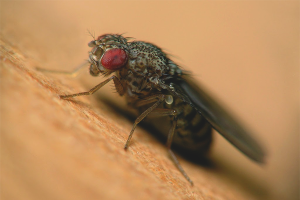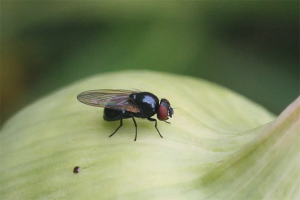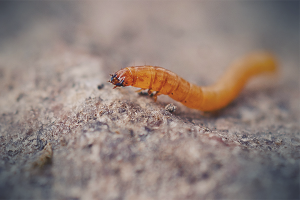The content of the article
How unpleasant it happens when you unexpectedly find incomprehensible insects in a jar of buckwheat and you have to throw out products. Usually the hostesses are upset that they overlooked and allowed spoiling of cereals or flour. Let's get acquainted with the main reasons for the appearance of bugs in bulk products and methods of dealing with this problem, proven in practice.
Why are there bugs in the grits?
It is a mistake to think that bugs are infused when you personally violate the sanitary norms of food storage. No matter how much you wash, clean or clean the kitchen, it's not about you. They come to your home with cereals directly from factories or plants, where they were allowed to enter. The enterprises must produce special heat treatment of products at high temperatures, comply with the appropriate standards of its content, including the illumination and humidity of the room.
Even in vacuum packages purchased in the store, there may be living creatures that migrate from pasta, dried fruit, coffee or tea purchased by weight. Specialists work at the factories, who must strictly follow the rules and procedure for processing future goods. Manufacturers who allow such spaces only make anti-advertising of their products, which is fraught with losses for the enterprise.
What insects can be got in groats
It seems to you that all the bugs that eat your future porridge are the same, it was not there. See how many varieties of them can be found in bags of cereals:
Red Mucoed. Habitat - mills, bakeries and cereal factories. They feed on flour-spoiled flour or rotten cereals, stored in conditions of high humidity. The size of an individual reaches 2.5 mm. If you are in the kitchen or in the pantry dry and warm, they will not find decent food for themselves and will remove themselves from your home. If you find small holes in the sieve for flour, you can be sure - you got a mucoed.
Bread grinder. Habitat - bakeries and bakeries.Grinders eat bread crumbs, cookies, dryers, biscuits and other dry baked goods. Once in the apartments, they can eat dried herbs, coffee, even books, herbariums, and tobacco. Very voracious. The size of one insect is up to 3 mm. These bugs are moving in flight, focusing on the light. In the process of searching for food, they can be found on the windowsills, closer to the lighted area. The use of human products, which penetrated the grinders, is fraught with gastrointestinal poisoning.
Khrushka flour Settled in kitchen cabinets. If you accidentally bring a bag of flour with a pair of such bugs into the kitchen, they will quickly spread throughout the area. The favorite food of the hruschak is wheat or rye flour, semolina, oatmeal, rarely buckwheat and dried fruit. The size of the insect reaches 3.5 mm. Khrushchaks lay larvae right in the products or in the crevices of kitchen furniture, breed very quickly, bringing offspring up to four times a year. When they are detected, products can be immediately thrown away, otherwise they can cause allergies and even food poisoning in humans.
Food moth. Planting in larger products, such as nuts or dried fruits, is sometimes moved to cereals. The size of this butterfly comes to 10 mm. She can lay more than 350 eggs in two weeks of her life.Then caterpillars hatch from them, devouring any food they come across.
How to get rid of bugs in groats and flour
Carefully read the following information to meet this small, but dirty enemy fully armed. If you just remove a bug from cereals or flour that came across accidentally, believe me, you have not solved the problem at all. It is necessary to perform a number of activities consistently:
- Review all containers in which bulk products, cereals, flour, sugar, salt, tea, etc. are stored. If you find bugs somewhere, immediately throw away the package or the contents of the jar.
- After that, the containers should be thoroughly washed with soap and hot water and dried well. It is better to throw away bags and cellophane bags immediately, do not even try to wash them.
- Products that remain beyond suspicion, put in the freezer for a couple of days. This is done in case the bugs still have time to lay eggs in the croup, of which at low temperatures the new progeny will not hatch.
- Empty kitchen cabinets and wash them thoroughly with disinfectantscan be soap with soda or vinegar, wash from all sides, penetrating into every crack.
- Gate valves and lockers can be boiled over with boiling water. Then let the furniture dry well, at least within a day.
- Shelves of dried cabinets lined with clean paper or newspapers, on which garlic cloves and bay leaves are laid out, can be spread out dry sprigs of lavender.
- Newly purchased cereals, flour and other products should be stored in metal or glass containers, which are tightly closed with lids. Pasta, packaged in boxes, be sure to pour into jars. For prevention, you can put in a jar unpeeled garlic clove, it does not emit a strong smell, but the bugs will not start.
- Buy bulk solids in small portions, but more often. Then, in any case, the bugs will not have time to settle in your products.
- Try to keep the kitchen always dry and warm, high humidity - the best environment for various harmful insects.
- Periodically look through the products in the cabinets in time to find a bug that has accidentally entered the rump. If you have something stored for more than a year, this is an unequivocal contender for throwing.
How to prevent bugs
Each housewife must understand that it is better to create conditions that are unbearable for the bugs in the kitchen than to fiddle with their destruction for a long time. There are few such rules, remember the most important ones:
- Cereals purchased in the store, it is better to immediately dry in the oven at a low temperature of not more than 20 minutes;
- To scatter products it is necessary in the glass or metal tanks which are densely closed by covers;
- Do not store a lot of food for a rainy day, periodically update your set of cereals, flour or sugar;
- Put garlic cloves or bay leaves in jars with solids, all kinds of bugs do not tolerate their smell;
- Store nuts and dried fruits only in the refrigerator in tightly closed jars;
- At least once a week wipe the kitchen furniture, especially the one where cereals are stored, with vinegar diluted in water;
- When purchasing groats or flour from a store, pay attention to the production date, do not take expired products, even at very large discounts;
- Keep track of the humidity in the storage rooms and in the kitchen.
It would seem that there is nothing difficult to avoid the appearance of bugs in the products.However, every hostess at least once in their life met with these pests. It is easy to defeat them, all means are at your fingertips, just do not lose patience, a real woman does not care.
Video: how to store cereals, so that there are no beetles and mold












To send